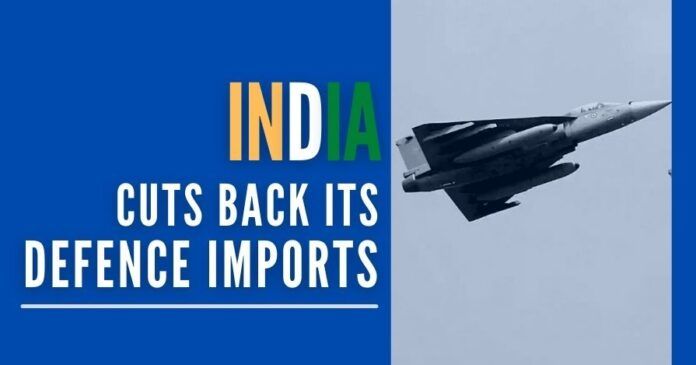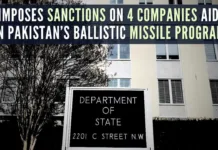
India’s import of arms has dropped over the past 10 years
Very interesting things emerge from the Stockholm International Peace Research Institute (SIPRI)’s report released on Monday about the past 10 years of worldwide arms import and export scenario. As per the report “The US, French and German exports rise, Russian and Chinese exports fall” and India’s import of arms dropped by 33 per cent over the past 10 years. The SIPRI also notes that arms import of Middle East region has grown significantly.
As for India, imports from Russia have gone down drastically and imports from the US have increased. With a sustained drive to achieve self-reliance and indigenization in weapon manufacturing, India’s imports in the last nine to ten years dropped by more than 33 per cent. Moreover, Russia, the main supplier of arms to India, suffered in the process besides the US which had emerged as a big supplier of arms to India in the last decade. Noting these points in its report on Monday, the reputed international organization SIPRI also said that the decline took place due to an attempt to reduce its dependence on Russian arms and complex procurement processes.
In one of the big-ticket upcoming purchases, the IAF (Indian Air Force) will buy 83 Tejas light combat aircraft (LCA) worth over Rs.48,000 crore from the aerospace company Hindustan Aeronautics Limited (HAL)
It may be mentioned here that at present, more than 70 per cent of inventory in the Indian armed forces is of erstwhile USSR and Russian origin. Moreover, the US in the last one decade had supplied arms and ammunition worth over 15 billion dollars. Attributing this reduction in imports to an attempt to reduce its dependence on Russian arms and complex procurement processes, the SIPRI report said “Russia was the most affected supplier, although India’s imports of US arms also fell by 46%,” the report said, adding that India is planning large-scale arms imports in the coming years from several suppliers.
Arms exports by Russia, which accounted for 20% of all exports of major arms in 2016–2020, dropped by 22%, the report said. “The bulk — around 90% — of this decrease was attributable to a 53% fall in its arms exports to India,” SIPRI said.
It also said exports by China, the world’s fifth-largest arms exporter in 2016-20, fell 7.8% between 2011-15 and 2016-20. However, the United States, the world’s largest arms exporter, saw its exports rise. Its global share of exports went up from 32% to 37% between 2011-15 and 2016-20.
Over the years, India has taken several steps to reduce dependence on imported military hardware. The defence industry was thrown open to the private sector in a big way with a special focus on giving an impetus to medium and small industries. Last year, the Indian Government banned the import of more than 100 items in a determined attempt to goad the armed forces to procure such systems from the local industry. More items are likely to be added to the list in the coming days. Also, the budget for next fiscal has set aside more than Rs.71,000 crore, 63 per cent of the capital budget of defence, for purchasing weapons systems from the Indian industry. The Government spent nearly Rs.50,000 crore, 58% of the capital budget, on indigenous equipment procurement.
In one of the big-ticket upcoming purchases, the IAF (Indian Air Force) will buy 83 Tejas light combat aircraft (LCA) worth over Rs.48,000 crore from the aerospace company Hindustan Aeronautics Limited (HAL). Moreover, the Army will buy upgraded 118 Arjun main battle tanks (MBT) worth over Rs.9,000 crore from the tank manufacturing unit in Avadi, Chennai. Prime Minister Narendra Modi last month handed over to the Army the indigenously designed and manufactured Arjun Main Battle Tank (MBT) MK-1A in Chennai.
“The third and fourth largest exporters also experienced substantial growth between 2011–15 and 2016–20. France increased its exports of major arms by 44 per cent and accounted for 8.2 per cent of global arms exports in 2016–20. India, Egypt and Qatar together received 59 per cent of French arms exports. Germany increased its exports of major arms by 21 per cent between 2011–15 and 2016–20 and accounted for 5.5 per cent of the global total. The top markets for German arms exports were South Korea, Algeria and Egypt.
“Russia and China both saw their arms exports falling. Arms exports by Russia, which accounted for 20 per cent of all exports of major arms in 2016–20, dropped by 22 per cent (to roughly the same level as in 2006–10). The bulk — around 90 per cent — of this decrease was attributable to a 53 per cent fall in its arms exports to India. Russia substantially increased its arms transfers to China, Algeria and Egypt between 2011–15 and 2016–20, but this did not offset the large drop in its arms exports to India,” said Alexandra Kuimova, Researcher with the SIPRI Arms and Military Expenditure Programme. “Although Russia has recently signed new large arms deals with several states and its exports will probably gradually increase again in the coming years, it faces strong competition from the USA in most regions,” said the report. SIPRI’s full report can be read here[1].
References:
[1] International arms transfers level off after years of sharp growth; Middle Eastern arms imports grow most, says SIPRI – Mar 15, 2021, SIPRI.org
- Subramanian Swamy approaches Supreme Court on Govt’s modification of 2G Scam Judgment to avoid auction of Satellite Spectrum - April 23, 2024
- Defence Minister Rajnath Singh visits Siachen. Reviews military preparedness - April 22, 2024
- Amit Shah’s shares in the Stock Market almost doubled in the past five years - April 21, 2024











Allah O Akbar !!
It’s far easier to get kickbacks from the West and in their safe havens.
Nothing surprising at the lotus maneaters actions.
Of course hands were at work earlier, but not so blatant.
[…] US, French and German arms exports rise, Russian and Chinese exports fall. India’s arms import… PGurus Spread the News […]
[…] US, French and German arms exports rise, Russian and Chinese exports fall. India’s arms import… PGurus ← NYPD decision to fire cop details online racist rants – New York Daily News […]